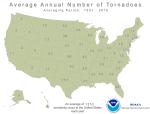COLUMBIA, Mo. – Dairy programs in the draft 2012 Farm Bill can reduce milk-feed margin volatility, which has plagued milk producers in recent years. Yet the proposed law does not cut milk supplies and continues the U.S. role in milk export markets.
“It’s important to note that farmer participation in the dairy program is voluntary,” said Scott Brown, University of Missouri dairy economist. He testified to Congress, April 26, in Washington.
A major shift in the dairy bill aims to protect producer margins rather than supporting milk prices, Brown said. In addition, producers can buy additional protection above the government base program to further reduce risks.
The new dairy bill would kick in when the price received for milk sinks too close to the cost of feed. In the past, dairy programs were tied to milk price.
Rapidly rising feed costs in a time of low milk prices hit dairy farmers hard starting in 2009, when milk receipts dropped $10.5 billion, the biggest loss since the start of records in the 1920s.
The proposed Dairy Security Act of the Farm Bill includes two programs: Dairy Producer Margin Protection and Dairy Market Stabilization. A producer choosing the margin program also becomes subject to the stabilization program. Producers can receive payments from the margin program and face restrictions under the stabilization options.
The margin defined in the law uses an all-milk price less calculated prices for corn, soybean meal and alfalfa.
Under stabilization, producers have limits on their milk production that receive market revenue. Under margin protection, producers will be paid based on their coverage level and USDA reported margin.
Generally, milk prices and feed costs are correlated, so margin payments tend not to occur often. However, when they are out of synch and margins shrink, producer payments would be triggered.
Brown said his computer dairy model shows infrequent need for payments based on low margins, and that the stabilization program runs for short periods, unlike past dairy programs.
The new programs reduce federal payments, one goal of Congress in writing the 2012 Farm Bill.
Program payments depend on producer participation. Rather than estimate farm enrollment, Brown relied on representative-farm research by Texas A&M University. From that he assumed 70 percent of the U.S. milk would be enrolled.
Brown ran 500 options, a stochastic approach, using different market assumptions in the model. Results were compared with a 10-year milk-production and price baseline. Results showed only a slight decline in milk production compared to the baseline.
One finding, Brown told Congress, was that producers can reduce risk from low margins by participating. Volatility also drops.
Brown said producers should study buying additional margin protection. The base program is triggered at a milk-feed margin of $4 or less. “Risk-averse farms can consider buying higher protection up to $8 milk-feed margins,” Brown said.
The analysis of the draft dairy bill shows only small declines in U.S. dairy exports.
For the most part, because of the response to low margins and stabilization of volatility, the dairy program would not operate for long periods. That reduces federal spending and market interference.
The University of Missouri testimony was requested by the House Subcommittee on Livestock, Dairy and Poultry headed by Rep. Tom Rooney, R-Fla., and ranking member Rep. Dennis Cardoza, D-Calif.
The policy came out of Foundation for the Future, a plan from the National Milk Producers Federation. Dairy was the first commodity group to prepare for the new Farm Bill.
Legislation based on that work was introduced by Rep. Collin Peterson, D-Minn., and Rep. Mike Simpson, R-Idaho, in 2011.
The dairy analysis can be seen at http://web.missouri.edu/~browndo/.
Brown, a former member of the MU Food and Agricultural Policy Research Institute, is in the Division of Applied Social Sciences at the MU College of Agriculture, Food and Natural Resources.
Read more http://extension.missouri.edu/news/DisplayStory.aspx?N=1406





